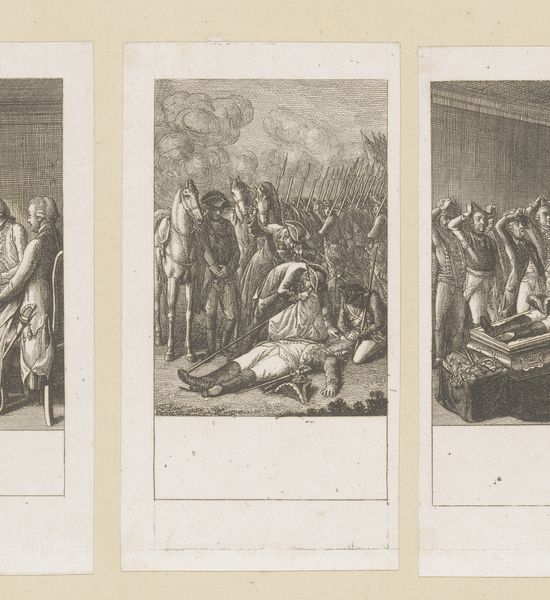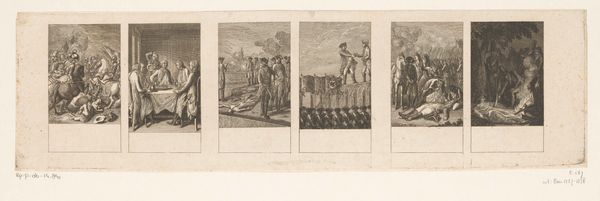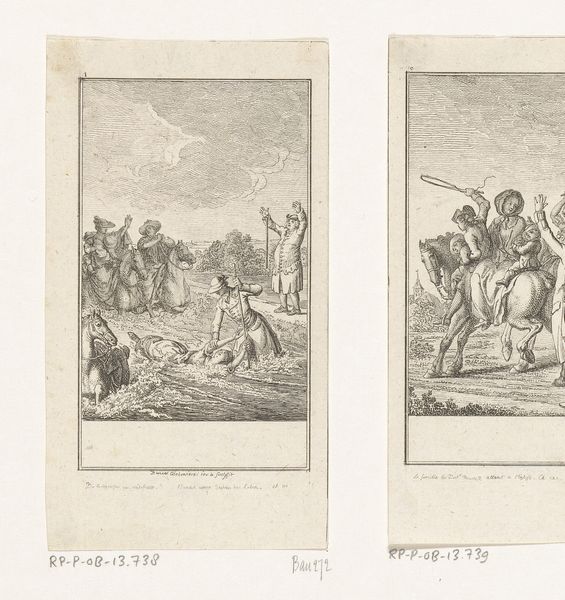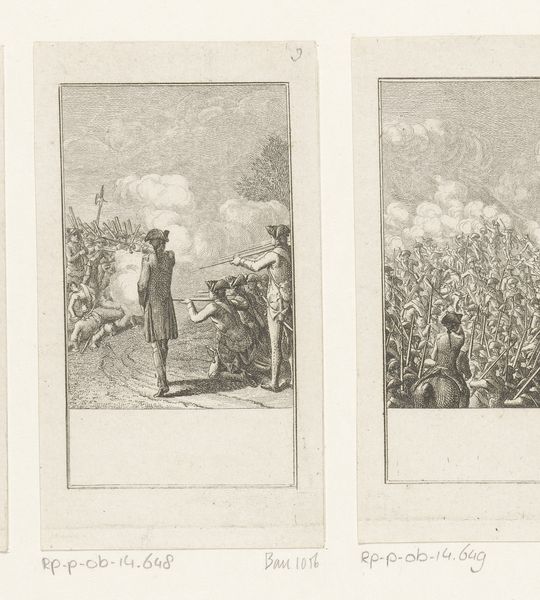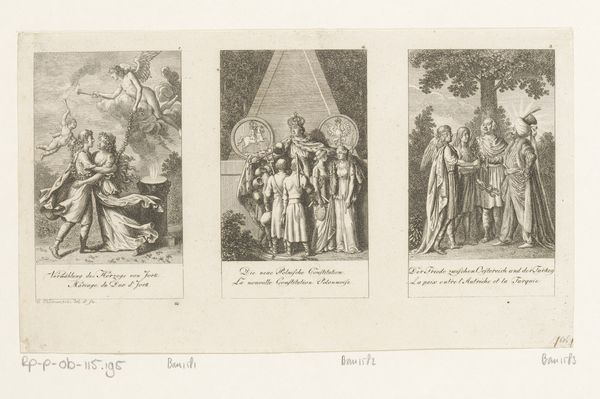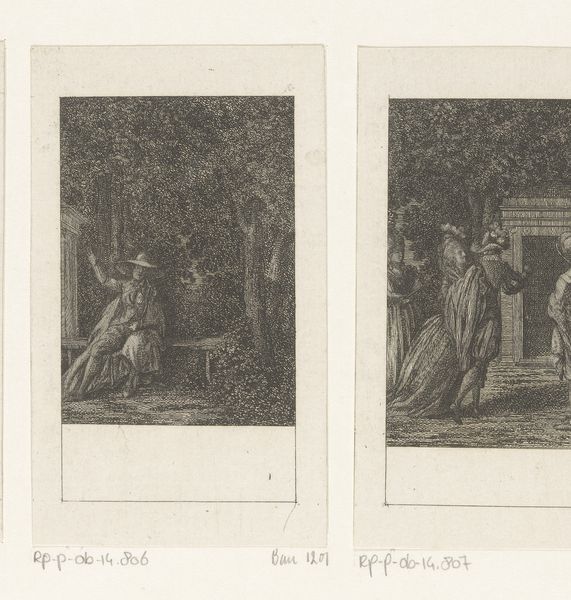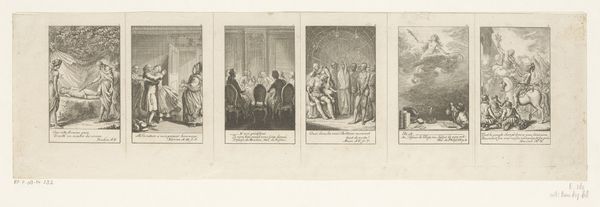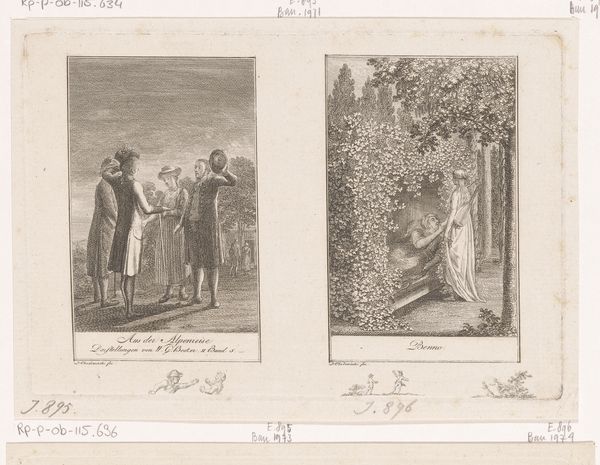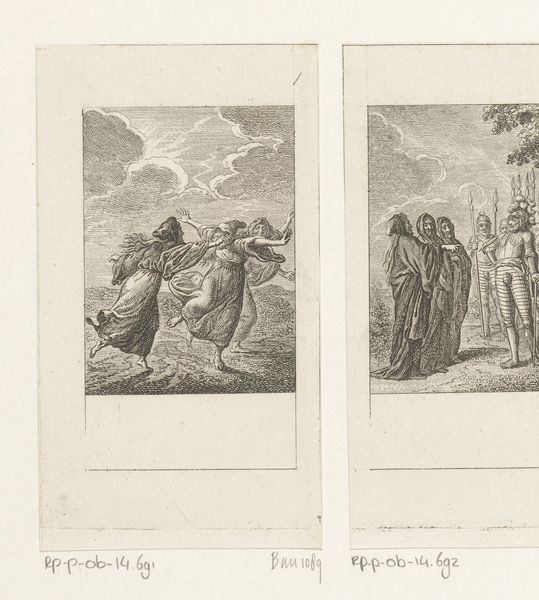
Zes voorstellingen bij de korte gedichten van Ludwig Hölty 1793
0:00
0:00
danielnikolauschodowiecki
Rijksmuseum
print, engraving
#
pencil drawn
#
narrative-art
# print
#
old engraving style
#
landscape
#
romanticism
#
genre-painting
#
engraving
Dimensions: height 81 mm, width 278 mm
Copyright: Rijks Museum: Open Domain
Curator: Here we have “Zes voorstellingen bij de korte gedichten van Ludwig Hölty,” a print made in 1793 by Daniel Nikolaus Chodowiecki. Editor: What strikes me first is its sequential nature, like a film strip, capturing perhaps moments in a narrative. The light is subtle but filled with a sense of quietude and Romanticism, isn’t it? Curator: Yes, absolutely. As an engraving, it relies on very fine lines to convey both detail and atmosphere, mirroring the sentiments in Hölty’s poems, which were deeply personal and often melancholic. Think of them as emotional landscapes, each scene capturing a fleeting moment, heavy with unspoken meaning. Editor: The scenes depict very ordinary settings. One of them shows people gathered near a grave. There’s an underlying political sentiment here as well? Or is it merely about the human experience in an indifferent natural environment? Curator: Well, considering the historical context, late 18th-century Europe was on the cusp of massive socio-political change, reflected in art through the lens of sentimentality. Genre paintings, like we have here, moved into interiority and emotional expressiveness. These small dramas taking place under trees and near modest homes weren't only reflections of private lives, but subtle nods towards ideas of virtue, simplicity, and natural morality. Editor: I notice a lot of the figures are draped in a specific fashion. A long gown on one, a long frock coat on another. Clothing can be such a specific indicator of the societal changes and shifts that influence even seemingly simple imagery. It’s almost an intentional distancing, framing these vignettes as deliberately separate. Curator: Yes, these engravings, although small, encapsulate significant shifts in how emotions and societal values were being depicted and consumed during the late 18th century. These weren’t grand historical paintings meant to glorify leaders, they were everyday stories of everyday people, laden with symbolic undertones relevant to contemporary cultural values. Editor: It is easy to think of this image, printed over two centuries ago, as quite divorced from current life. But in its depictions of emotion, and reflections on grief, it has something timeless about it too. Curator: Indeed. Even through changing artistic trends and political upheaval, the universal experience depicted remains powerfully relevant.
Comments
No comments
Be the first to comment and join the conversation on the ultimate creative platform.
